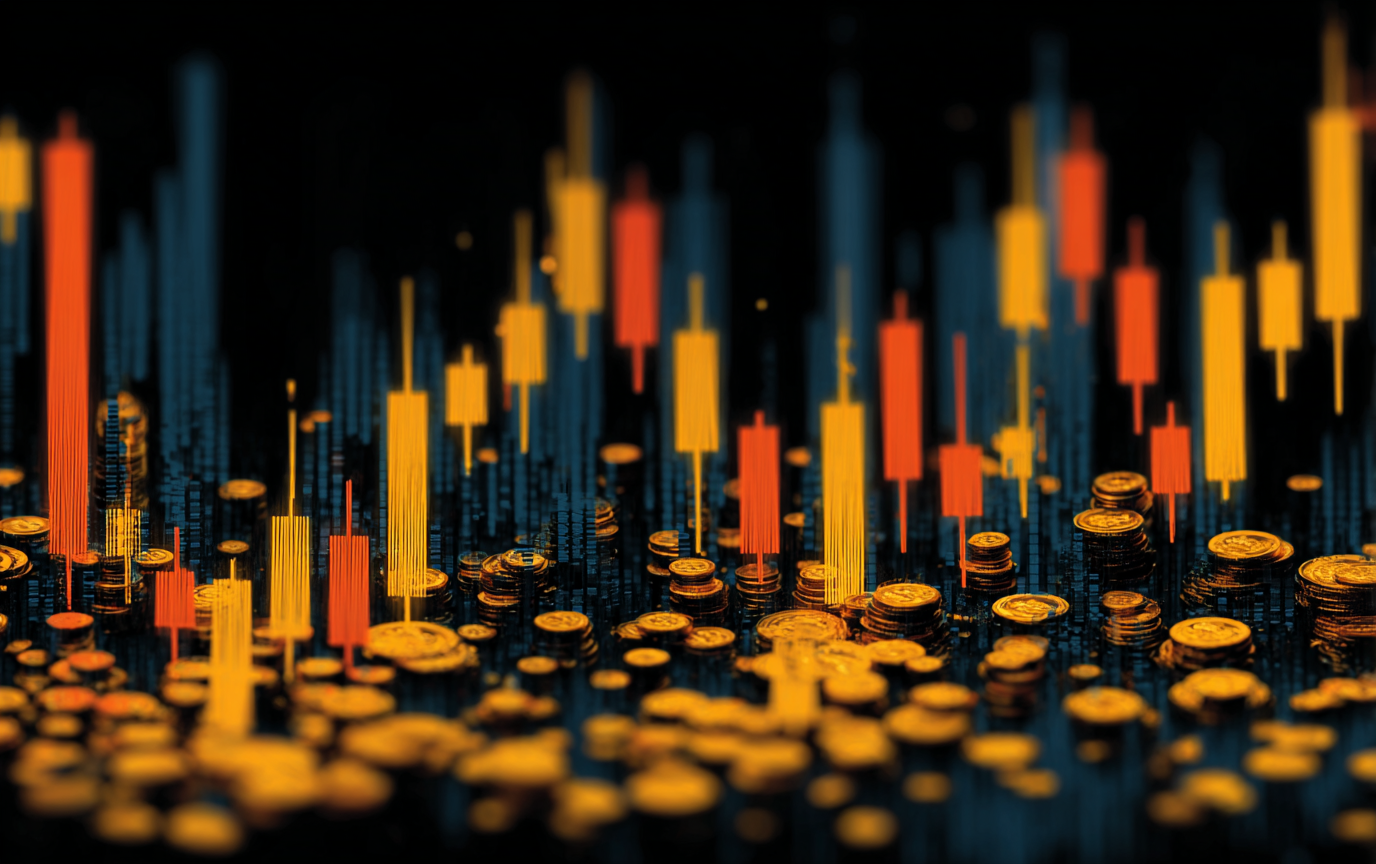Cryptocurrency has taken the financial world by storm, and for good reason! As digital currency steadily gains footing, understanding its intricacies is essential, especially if you're interested in trading. Whether you're a total beginner or someone with a bit of crypto experience, learning about technical analysis can set you on the right path to making informed decisions. This article promises to guide you through the fundamentals of technical analysis, explaining key concepts that will help you interpret crypto market trends like a pro.
Technical analysis is more than just a set of charts and graphs; it’s a crucial tool in evaluating investment opportunities by analyzing statistical trends from trading activity. Whether you’re looking to day trade or make long-term investments, understanding these principles can provide you a significant edge. But why is this so vital, especially in the highly volatile world of cryptocurrencies? Essentially, predictive analysis can help guide you toward timing your trades correctly, giving you the upper hand in this fast-paced market.
Imagine you're navigating through a vast ocean of digital currencies, each representing a unique investment opportunity. Without a map, or in this case, a reliable way to assess which direction to go, you might end up on the wrong shore. Technical analysis serves as that map, providing insights based on historical price patterns and market psychology. So buckle up, friends! By diving into this topic, you'll empower yourself to make smarter trading choices in the ever-evolving realm of cryptocurrency.
What is Technical Analysis?
To kick things off, let’s break down what technical analysis really is. In its simplest terms, technical analysis involves evaluating price charts to forecast future price movements. Unlike fundamental analysis, which looks at a company's overall financial health or market factors, technical analysis focuses solely on price data and trading volumes. You'll analyze patterns, trends, and indicators drawn from the market activity to make predictions.
Technical analysis rests on three key assumptions:
-
Market Discounts Everything: Every piece of information, whether it be news events, technical developments, or changes in market sentiment, is already reflected in the price.
-
Price Moves in Trends: Prices often follow trends over time, which means if a cryptocurrency is rising, that trend is likely to continue until a significant event causes a shift.
-
History Tends to Repeat Itself: Historical price patterns often recur due to market psychology, which makes understanding past trends vital for predicting future movements.
By grasping these assumptions, you set a solid foundation for your technical analysis journey.
Essential Tools of Technical Analysis
Just like a carpenter needs tools to construct a house, crypto traders need specific tools to analyze and interpret price movements. Here are some essential tools that you should familiarize yourself with:
1. Price Charts
Price charts are the backbone of technical analysis. They visually represent how a cryptocurrency’s price has changed over time. The most common types include:
-
Line Chart: The simplest form, connecting closing prices with a continuous line. Great for spotting overall trends but lacks detailed data.
-
Bar Chart: Displays open, high, low, and close prices for each time period, providing more information on price fluctuations.
-
Candlestick Chart: Similar to bar charts but visually richer, showing the same four data points with colored "candles." Bullish candles are often green, while bearish candles are red or black.
Familiarize yourself with these types of charts, as they will become second nature in your analysis.
2. Technical Indicators
Indicators help assess momentum, volatility, and market conditions. Here are a few widely used technical indicators:
-
Moving Averages (MA): Smoothens price data to identify trends over time. A simple moving average (SMA) is calculated by averaging the prices over a specified period. Moving averages are useful for recognizing support and resistance levels.
-
Relative Strength Index (RSI): This momentum oscillator measures the speed and change of price movements. It’s vital for identifying overbought or oversold conditions, helping you decide when to enter or exit positions.
-
Bollinger Bands: This volatility indicator consists of a middle band (SMA) and two outer bands that expand and contract. They help traders identify the price range in which a cryptocurrency typically moves.
By combining these indicators with price charts, you can gain deeper insights into market trends.
How to Analyze Price Patterns
After understanding the tools, it’s time to dive into recognizing price patterns on your charts. Patterns can signal continuation or reversal of trends, playing a crucial role in technical analysis.
1. Support and Resistance Levels
These are critical concepts in technical analysis. Support is the price level at which a cryptocurrency tends to stop falling and begin to rise again. Conversely, resistance is where the price typically stops climbing and starts to fall. Recognizing these levels can help you identify potential entry and exit points.
To find support and resistance levels, look for historical price points where the currency price has consistently bounced off. This helps you anticipate future price movements.
2. Trend Lines
A trend line is a straight line that connects two or more price points and extends into the future, allowing you to visualize support and resistance. An upward trend line indicates increasing prices, whereas a downward trend line shows decreasing prices. Establishing these lines helps traders evaluate the direction of the market and make strategic decisions.
3. Common Price Patterns
-
Head and Shoulders: A reversal pattern signaling a change in trend direction, characterized by three peaks—a higher peak (head) between two lower ones (shoulders).
-
Double Top and Double Bottom: A double top indicates a bearish reversal after an uptrend, while a double bottom suggests a bullish reversal after a downtrend.
-
Triangles: These can be ascending, descending, or symmetric and often represent periods of consolidation before the price breaks out in either direction.
Recognizing these patterns can enhance your predictive capabilities significantly.
Putting It All Together: A step-by-step Guide to Analysis
With all the tools and concepts laid out, here’s a step-by-step process to help you conduct a basic technical analysis:
-
Select a Cryptocurrency: Choose a crypto asset you want to analyze.
-
Choose a Time Frame: Depending on your trading strategy, this could be minutes, hours, days, or weeks.
-
Analyze the Charts: Utilize line, bar, or candlestick charts to observe price movements and patterns.
-
Identify Key Levels: Look for significant support and resistance levels that can inform potential price action.
-
Apply Indicators: Use indicators like RSI or Moving Averages to complement your analysis.
-
Look for Patterns: Study the patterns and trends you see in the chart to inform your trading strategy.
-
Make an Informed Decision: After gathering all relevant information, decide whether to buy or sell, setting stop losses to manage risk adequately.
By following these steps, you can systematically approach technical analysis, increasing your chances of success in the market.
Tips for Mastering Technical Analysis
Becoming proficient in technical analysis takes time and practice. Here are some helpful tips to get you on the right track:
-
Start Small: Practice your analysis on smaller amounts before investing larger sums.
-
Keep Learning: Stay updated on new indicators, patterns, and trading strategies through books, online courses, or forums.
-
Join Trading Communities: Surround yourself with like-minded individuals who can share insights and help you learn continuously.
-
Review Your Trades: Keep a journal of your trading decisions to understand what worked and what didn’t.
-
Stay Disciplined: Emotional trading is often detrimental. Stick to your strategy and don’t let fear or greed dictate your decisions.
With persistence and a willingness to learn, you’ll surely find your footing in the world of technical analysis.
In conclusion, understanding technical analysis is a cornerstone for anyone looking to dive deeper into the world of cryptocurrencies. As you explore the various price patterns and technical indicators, you'll become empowered to make informed trading decisions that can enhance your portfolio's potential. So why wait? Start mastering technical analysis today, and take control of your crypto trading journey!
Remember to check out our other guides on Crypto 101, find the best trading tools and wallets in our Tools and Wallets category, and stay updated with the latest trends in our Exchange Reviews category. Your journey in the fascinating world of cryptocurrency is just beginning!












